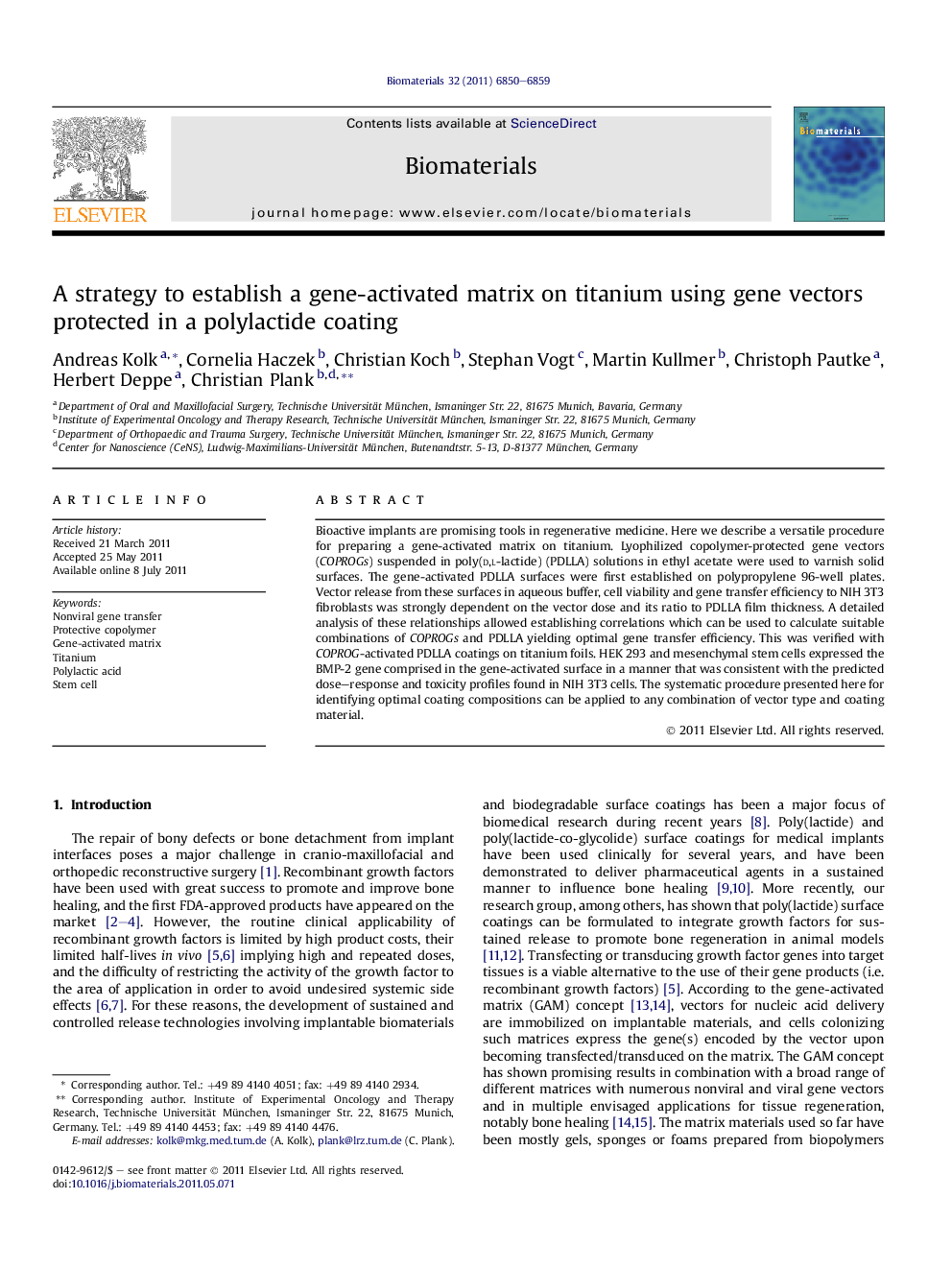| Article ID | Journal | Published Year | Pages | File Type |
|---|---|---|---|---|
| 7804 | Biomaterials | 2011 | 10 Pages |
Bioactive implants are promising tools in regenerative medicine. Here we describe a versatile procedure for preparing a gene-activated matrix on titanium. Lyophilized copolymer-protected gene vectors (COPROGs) suspended in poly(d,l-lactide) (PDLLA) solutions in ethyl acetate were used to varnish solid surfaces. The gene-activated PDLLA surfaces were first established on polypropylene 96-well plates. Vector release from these surfaces in aqueous buffer, cell viability and gene transfer efficiency to NIH 3T3 fibroblasts was strongly dependent on the vector dose and its ratio to PDLLA film thickness. A detailed analysis of these relationships allowed establishing correlations which can be used to calculate suitable combinations of COPROGs and PDLLA yielding optimal gene transfer efficiency. This was verified with COPROG-activated PDLLA coatings on titanium foils. HEK 293 and mesenchymal stem cells expressed the BMP-2 gene comprised in the gene-activated surface in a manner that was consistent with the predicted dose–response and toxicity profiles found in NIH 3T3 cells. The systematic procedure presented here for identifying optimal coating compositions can be applied to any combination of vector type and coating material.
